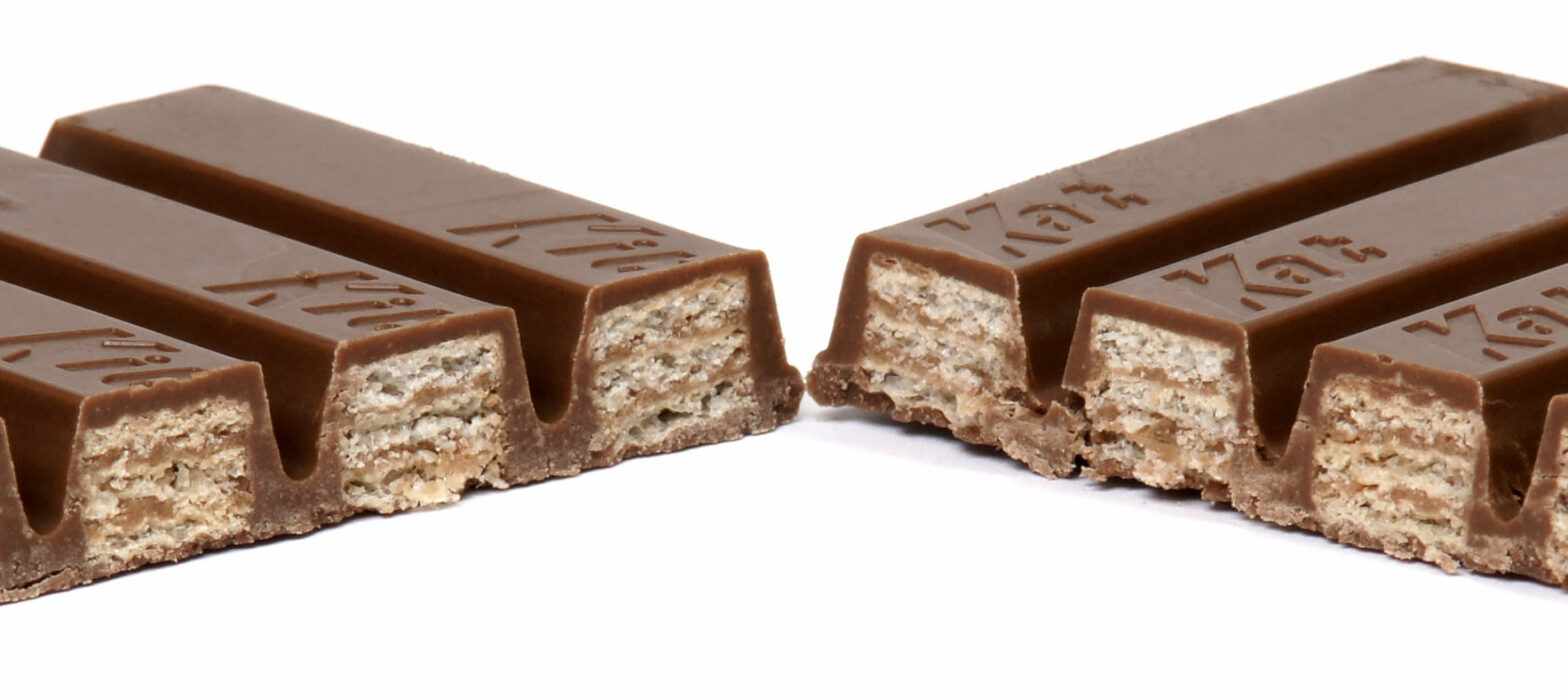Is a shape, smell or taste so unique to a brand that it can be trade marked? According to Nestlé, these traits can be seen as iconic to a brand, and is worth fighting for at court.
Early last year, High Court judge Justice Arnold decided that the four-finger KitKat shape is not a UK trade mark in the case of Nestlé v Cadbury. Nestlé argued on the basis of acquired distinctiveness through use. Surely anyone who sees a four-fingered chocolate bar would associate it with KitKat. However, the chocolate company lost the case and turned to the Court of Appeal, which handed down its decision today.
The Court of Appeal’s decision deals with the question of protection of the KitKat shape in the UK, but also more broadly provides guidance on what types of shapes should be protected through trademark registrations. This decision may be appealed, with permission, to the Supreme Court, but as it stands, KitKat’s four-fingered shape is not as iconic to the brand as Nestlé would like to believe.
“The question is whether a consumer would look at the four-finger chocolate bar and straight away know it was a KitKat, without the logo or wrapper. Consumers will tend to be influenced by a brand name and the outer packaging of a product rather than its shape alone, so the threshold for registering shapes as trademarks is high. However, whilst is it rare to win trademark protection for shapes, it is not impossible; the Toblerone shape and Nestlé’s Walnut Whip are both protected,” says Sharon Daboul, trademark attorney at EIP.
“The hurdle is arguably higher for bigger brand owners like Nestlé and Cadbury, whose brand names and packaging are far more famous than the shapes of their products. Whilst the name KitKat is far more distinctive than the shape of the chocolate bar that Nestlé tried to register, Nestlé had to prove that it was the unbranded shape alone that consumers relied upon to know the product. Proving that consumers associated the shape with a KitKat bar was not enough; consumers had to rely on the shape as an indication of origin and the onus was on Nestlé to have shown this in the earlier evidence rounds,” Daboul explains.
In 2010, Nestlé had applied to register the shape of its Kit Kat chocolate bar as a trademark. Cadbury opposed the application. A Hearing Officer at the UK Intellectual Property Office determined that the trademark did not meet the requirements for registration. Nestlé appealed to the High Court and Arnold J referred three questions to the Court of Justice of the European Union (CJEU) for clarification. The CJEU handed down its judgment on 16 September 2015, and Arnold J issued his decision last year.
Daboul believes that registering the KitKat shape would give Nestlé a valuable monopoly and competitive advantage over other confectionary manufacturers, which is one of the reasons why Cadbury has been keen to stop them. It follows an earlier dispute between the manufacturers over registering the colour purple as a trademark; Cadbury lost that battle in 2013.
“Non-traditional trade mark registrations covering shapes, sounds, colours and smells are becoming increasingly popular as brands look to experiences to drive brand value,” says Mishcon de Reya’s IP Lawyer, Sally Britton. “This case is interesting as it examines the type of use and consumer recognition required to obtain monopoly protection over a shape mark. Businesses seeking to protect non-traditional trade marks such as shapes or packaging will need to provide evidence that consumers are relying on that trade mark to identify the origin of the product.”
EIP’s Sharon Daboul believes that if Nestlé had won today, it would have set a new precedent that could open IP floodgates for businesses looking to protect their competitive edge. “This could eventually open the doors for other brands to emulate the KitKat and produce four-finger bars of the same size and shape, as we have seen in the Lego case where an unsuccessful attempt to protect the brick has led to more copycats in the marketplace.”






